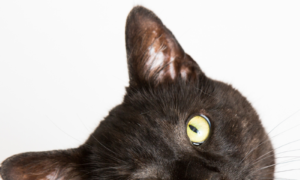When researching cats, there’s always something new to learn. In honor of National Cat Day, I thought it would be a good time to share some interesting facts about cats and further educate those who adore and idolize their feline companions.
Check out these feline facts from Catsinternational.org:
Did You Know…?
- When it comes to pets, cats outrank dogs. There are 10 million more cats kept as pets than canines.
- Every cat carries the Tabby gene.
- Most adult cats do not have the enzyme that allows them to digest milk.
- Cats prefer to dine on food that is at body temperature…the temperature of freshly killed prey!
It’s Cat Version of a Happy Dance!
- After successfully hunting for and capturing its prey (such as a mouse or a toy), many cats perform a tension-releasing dance. Supposedly, it builds self-esteem and confidence in the cat.
A Cat’s Body is Amazing!
- When cats drink water, their tongues curl under and that is how they scoop water into their mouths.
- Cats rely on their whiskers to give information about the prey they stalk.
- A cat’s whiskers are so sensitive that they can detect the slightest changes in air pressure or air currents. This gives them a radar at night and can also alert to them to an incoming storm.
- Cats have 244 bones in their bodies, as opposed to 206 in the human body. They have 60 vertebrae and almost 20 of those bones are located in the tail for flexibility.
- And talk about flexibility…cats have 517 muscles which allow them to move the front and rear parts of their bodies in opposite directions.
- Each ear on a cat is operated by 32 muscles and can turn 180 degrees. Sorry, humans, you only have six muscles there!
- Cats can tolerate temperatures up to 124 degrees.
Are We Being Played?
- Adult cats usually only meow to communicate with humans, not other cats. Cats have also been known to change the tone of their meow to manipulate humans
Amazing!
- From a stand still position, a cat can jump five times the length of its body.
- Cats can see 280 degrees around peripherally but since they are far-sighted, they cannot see well up close.
- A healthy mature cat will spend about 15% of his life in deep sleep; 50% in light sleep; and just 30% of his time awake. Cats attain full alertness, however, much quicker than any other creature.





